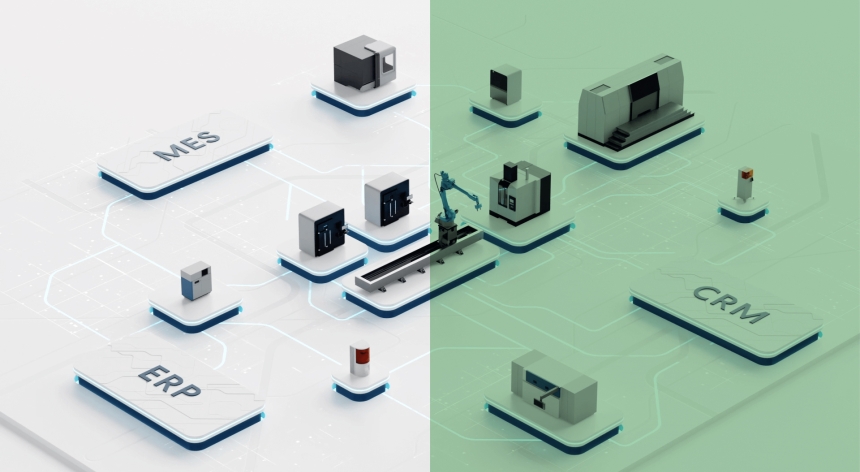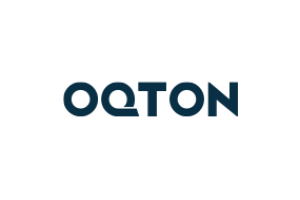Building a winning company: 5 talent acquisition best practices for startups
Building a winning company: 5 talent acquisition best practices for startups
Every funded company knows that venture capital is a relationship that goes far beyond the capital itself. Both parties have stakes in each other’s success, and so they nurture that relationship and help each other grow. And like every relationship, the “trick” is often in finding the right match: Who is most compatible? Who and how can we help the most?
In January 2021, we announced that we had taken part in Oqton’s Series A funding. Just 8 months later, the company announced that it had been acquired by 3D Systems for an impressive $180 million. In those 8 short months with us, Oqton nearly doubled in size, going from a headcount of 50 to almost 100.
The most immediate reasons we chose to invest in them was depth of their industry knowledge, the strength of their international talent pool, and their world-class product in the making, all of which practically predicted this early success. Another reason was the operational support they were looking for – specifically: helping them acquire the talent they needed to scale.
Talent has an obvious and major impact on how you build your company. Jo Wilkinson, our Talent Acquisition Partner, discusses the strategic repercussions it can have on an early-stage business, where the cost of replacing a specialist can be as high as 213% of their salary. Jo also points out how long the process can take. “Recruitment,” she says, “is just filling an open position. Talent acquisition is about finding the right people for an organisation.”
While extremely experienced – Jo began her career in recruitment in 1998, first in Europe and then Asia, where her largest client was none other than Huawei – Jo’s collaboration with Oqton came as something of a new role. Not only was she new to working in-house (for Fortino), it was her first time being “outsourced” to a portfolio company in a sector about which she knew virtually nothing.
It bears mentioning at this point that Jo’s decision to turn to in-house recruiting came as a reaction to much of the automation and changing practices within agency-side recruitment. Specifically, Jo had started to miss the more interpersonal relationships she had with clients. Working directly with portfolio companies allowed her to go back to that: getting to know a client, discovering their company culture, understanding the subtleties of their needs, and connecting them with the right people to succeed.
Oqton was one of the first portfolio companies that signed on for Jo’s services and the learning curve was obviously steep. Not only was there everything to learn about the company and its market, the company had just announced its Series A and needed to ramp up its Sales, Marketing, and Customer Success teams. On top of having to help find and hire the best candidates for these positions, Jo had to help set up the right hiring processes to match Oqton’s growth.
Ben Schrauwen, Oqton’s co-founder and CEO, says that "as soon as Jo onboarded, we turned over our recruitment activities to her – we were super busy and needed someone dedicated to that task. And with the stage we were at, we needed Jo to integrate in the business and upskill quickly so she could start to hire.
“With Fortino providing us Jo’s expertise, we were able to almost double our headcount globally in just 6 months. "
This interview shares Jo’s 5 best practices based on her 20+ years of experience, but also on her time with Oqton.
Want to build by learning from others? Sign up for our newsletter and get all the news, case studies, and insights on B2B SaaS Venture Capital in Amsterdam and beyond.
Best practice #1: Involve the recruiter

Jo says she sees similarities between several of the startups she’s been working with, but sees Oqton as a “best-in-class” example of how quickly they involved her. “Almost immediately after our first meeting,” she says, “Ben got me very integrated into the business. Not necessarily the ins and outs of the software, but to be able to understand it, and understand its benefits.”
This also meant inviting her to product and business all-hands presentations and allowing her to sit in on mock sales interview scenarios, which showed her how the product was positioned to a potential client.
“It was certainly full on,” she says. “I was working nights and early mornings, and there were whole weeks when I was even dreaming of the stuff.”
But the immersion paid off. One of the most important factors in finding the right talent for a company is to understand that company’s culture. “I’m never just selling a job,” says Jo. “When I approach people, or when I'm speaking to candidates, a lot of the time I'm the first touch point that person has with the company. So, it's really important that I can describe it correctly, and in detail: the kind of organisation that person is going to join, particularly if they're going to be joining remotely.”
It also helps the recruiter match the right candidate to the company. What Jo discovered early on was Oqton’s culture of transparency and engagement. “Oqton are all about solving problems that have never been solved before. The manufacturing process, whether that be 3D printing, additive, robotic welding, CNC machining, they’re looking for solution providers, and that collaboration is massive across the company.
“You can ping someone on Slack and they’ll come back to you, even on weekends or in the evening. Not that it’s expected. It’s not that Ben has asked them to do this, it’s just the type of people they are. It’s a culture of ‘customer delight’.”
She found that this was also true of the candidate experience. When she first started, she says, Ben made it clear that every candidate would get a response. “That was something that Ben was really keen on and something I have always tried to do – no feedback can be one of the biggest complaints of active candidates.”
Besides knowing that Oqton’s reputation would be well-maintained, Jo had a clear picture of the type of candidate would not only fit the role, but would thrive in that environment, and add to it, and help the company grow.
Best practice #2: Integrate the recruiter into your Comms

An obvious extension of getting your recruiter involved is to integrate him or her into your communications. Remotely, this means adding them to Slack, for example, and group emails, but Jo recommends companies take this a step further, by giving them access to your Zoom account, or Google Meets, giving them a company email address, updating their LinkedIn profile to say they’re working for that company.
This adds credibility when candidates do their own research, but more importantly enables the recruiter to do their job. Jo gives an example of reaching out to the team on Slack: “We were pushing out a new campaign,” she says, “and I asked everyone for some help. The engagement was really good, people were very happy to push the roles out to their networks.”
Being integrated into the company’s communications also allows the recruiter to monitor the ‘health’ of the organisation, or its mood. With Oqton entering a full-scale acceleration, Jo saw how busy people were, with the company seemingly overwhelmed with strategic opportunities. “It’s a nice problem to have, and Ben, was very good at steering the ship and keeping people focused,” she says, but as a recruiter, it allowed her to understand the company’s pressures and adapt her recruitment campaigns to help relieve them.
“Ben was always transparent and clear with his communication,” says Jo. “How well the business was doing, even how much money they had left in the bank. Transparency and clarity are key for any business, but I don’t know too many CEOs that are that open, but that openness developed a lot of trust and commitment, from me as well as everyone else.”
Best practice #3: Give the recruiter access to your hiring managers
On top of having to hire for Sales, Marketing, and Customer Success, Jo had to help put a process into place that would scale with the company. “When I came into Oqton [in April], there were about 55 or 60 of us. Now there are around 90. And now, with the acquisition, there are another 120 engineers coming on board.”
To properly build a process of any size, companies should allow the recruiter to have access to their hiring managers. It’s one thing to have access to the senior leadership, but it gets much more detailed at the more operational level, which is why recruiters need to meet with the hiring managers early on and get those discussions going.
“Again,” she says, “Ben introduced me to them right from the start, whether they were hiring or not at that point, so that I could interview them, ask them why they worked for Oqton, so that it wasn’t just getting Ben’s version of things but really understanding why others joined him on the journey.”
This, of course, showed her more about the company culture, but it also helped her understand more about each department’s needs and the – sometimes subtle – differences between them. “It was really interesting because I asked them: what do you love, what are your challenges, and I would say that almost everybody told me how busy it was, and a bit overwhelming.”
Jo herself was aware of the pace. Still, these conversations allowed her to add more granularity to her hiring strategy and the process she was building. “Regardless of whether that person needed to hire right then or in two months’ time, getting that relationship started with them was essential.”
Best practice #4: Get an applicant tracking system (ATS)

While Jo is a strong proponent of interpersonal relationships, she doesn’t deny the value – and sometimes necessity – of automation. Applicant Tracking Systems in particular are crucial to helping the process flow more seamlessly and to add traceability.
“You’re not just waiting for the recruiter to ping you,” says Jo. “ATSs are all SaaS-based now, and so hiring managers can go straight into the system and see who’s listed there. They’re also great for collaboration – they really save time, which is, again, what we’re always up against.”
When Oqton was hiring for their CMO, for example, their ATS automation and collaboration functionalities helped the team identify and shortlist the strongest candidates from the 75+ applicants they had for the position.
Best practice #5: Establish a clear process
You can’t scale without processes. And given the pace at which Oqton was scaling, Jo knew how important it was to get one in place: “It was new and full on, but you have to put your faith in your ability and trust your processes.”
An example of one of Jo’s process points was making sure that the hiring managers weren’t carrying out too many interviews. Interview fatigue is a real thing, she explains, and she didn’t want to create any knock-on effect on the candidate experience, which is another step in her process. “There’s also making sure that you’re not all asking the same questions, but putting together interview bundles to bring everyone’s notes and evaluations together and keep everyone in the interview process on the same page.”
Processes like these help streamline communication, Jo says, and foster that all-important engagement.
“One meeting with Jo was often sufficient,” says Kris Wouters, Oqton’s General Manager for Healthcare. “This is key in a busy environment. After synching up and a few adjustments along the way, Jo was able to run with the requirements, and later, it was helpful to exchange findings with her after an interview.”
The effect of building a winning team
When asked to look back and consider the end result, Jo admits that she’s sometimes surprised by how well everything went, but credits Ben and his team entirely. She calculates, for example, that Fortino’s support saved Oqton close to €200,000 in the process, but couldn’t quantify how much they’d saved in terms of time and effort.
She also describes a situation she thought would be difficult but resolved itself immediately. “We had two incredibly strong candidates present themselves for the same position,” she says. “I wondered how Ben would choose between them, but in fact he just turned to me and said, ‘It’s a no-brainer: we’ll hire them both’.”
But this, she says, goes back to the company culture. “They’re problem solvers – they knew they could use the candidates in other roles.”
And this culture, she believes, played a part in Oqton’s remarkable acquisition. “There was, of course, the product, but big companies are going to be more careful with a startup that has only just started to earn revenue. So besides the product, they’re going to look at the teams and the leadership you have in place. You’re going to want an idea of how this company is going to develop.”
When an organisation approaches a target company, they also consider the type of integration they’ll want to implement. They can, for example, decide that it’s best to downsize the target company after acquisition. And in another nod towards Ben and his team’s success, Jo points out that 3D Systems has agreed not only to keeping Oqton’s team in place and letting it operate as an independent company, but to provide the additional 120 engineers, who will fall under the Oqton brand.
If you’re a Europe-based B2B SaaS company looking for advice and potential investment, we can help. Get in touch and let’s get the conversation started.
